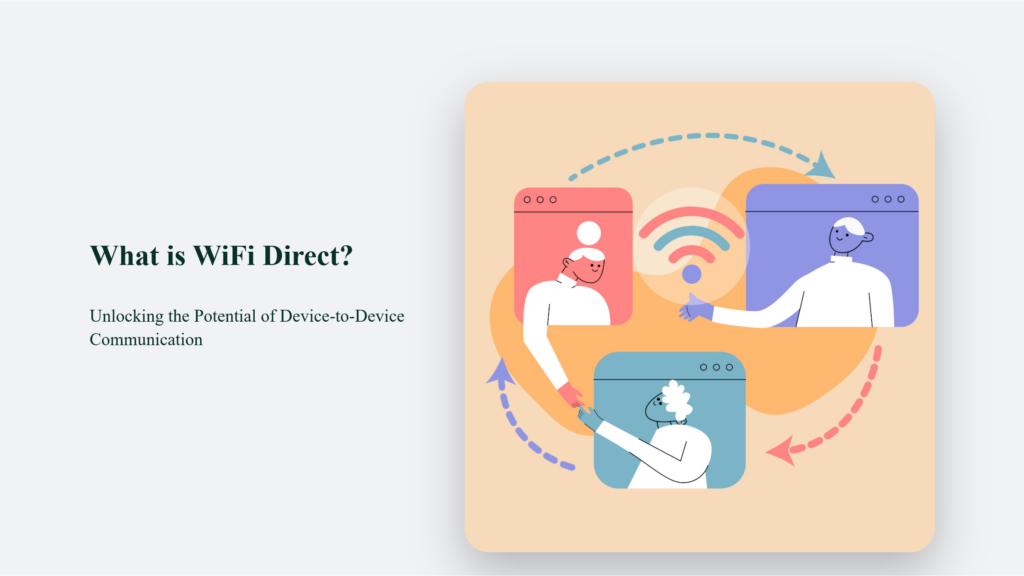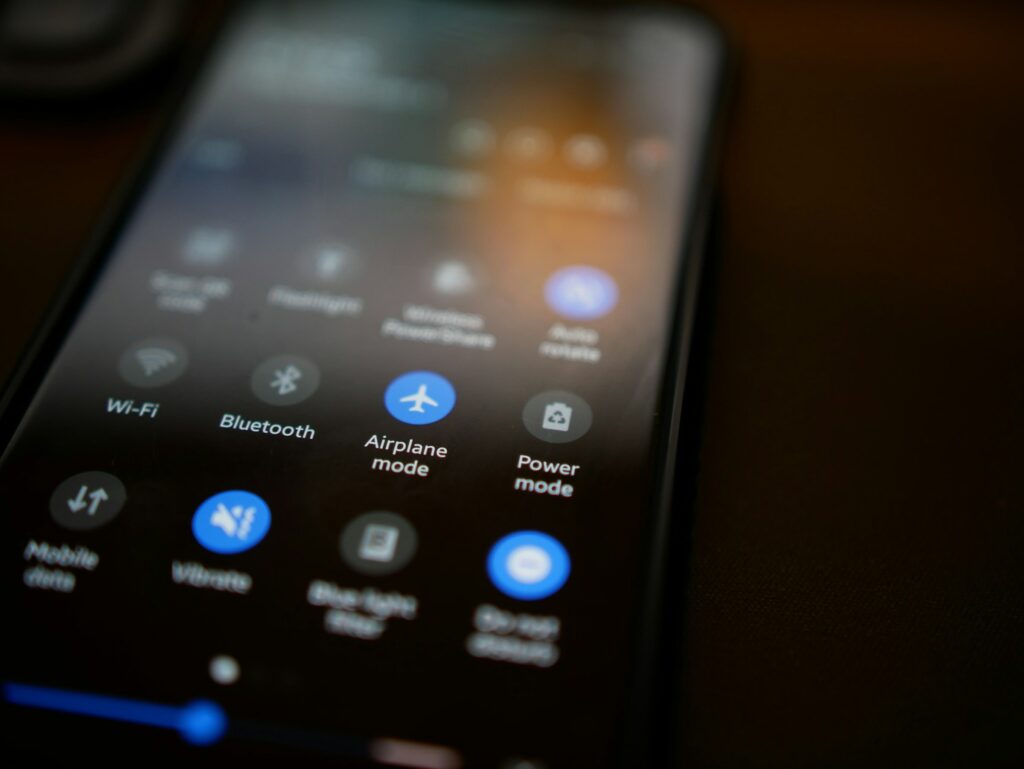

What is WiFi Direct? Unlocking the Potential of Device-to-Device Communication

As Seen On
In the ever-evolving world of wireless technology, WiFi Direct has emerged as a game-changer, revolutionizing how devices connect and communicate. Gone are the days when you had to rely on a router or a complicated setup process to establish a connection between your devices.
WiFi Direct has simplified the process, enabling seamless and efficient device-to-device communication.
In this article, we’ll dive deep into the concept of what is WiFi Direct, explore its benefits, and discover how it’s transforming the way we interact with our various mobile devices everywhere.

What is WiFi Direct?
Wi-Fi Direct, also known as Wi-Fi P2P (Peer-to-Peer), is a powerful wireless communication standard that allows devices to connect directly without needing an intermediary device, such as a wireless router or an access point.
This innovative technology leverages the same Wi-Fi capabilities that we use to connect devices to the internet, but it takes it a step further by enabling direct communication between devices.
Imagine you’re at a friend’s house, and you want to share a large video file with them. Traditionally, you would have to connect both devices to the same Wi-Fi network, wait for the file to upload to a cloud service, and then share the link with your friend.
With Wi-Fi Direct, you can establish a direct Wi-Fi connection between your two devices and transfer the file in seconds without needing an internet connection or a complex setup process.
The Power of Device-to-Device Communication
One key advantage of Wi-Fi Direct is its ability to facilitate seamless device-to-device communication. Whether you’re connecting your smartphone to your smart TV, sharing files between laptops and Apple devices, or even printing documents from your tablet to a Wi-Fi Direct-enabled printer, the possibilities are endless.
Real-World Examples:
- Wireless Screen Mirroring: With WiFi Direct, you can easily mirror your smartphone or laptop screen on your smart TV, allowing you to enjoy your favourite content on a larger display without the need for cables or a complex setup.
- Multiplayer Gaming: WiFi Direct enables you to connect multiple gaming devices directly, creating a local multiplayer gaming experience without needing an internet connection or a dedicated gaming console. It’s perfect for playing mobile games with friends.
- File Sharing: Say goodbye to the hassle of using USB drives or cloud services to transmit data-rich content between devices. WiFi Direct lets you quickly and securely share media files, photos, and videos directly between devices, making collaboration and data transfer a breeze.
The Benefits of WiFi Direct
Wi-Fi Direct offers a range of compelling benefits, making it an attractive choice for personal and professional use. Let’s explore some of the key advantages:
- Simplicity and Convenience: Wi-Fi Direct eliminates the need for a complex setup process or the reliance on an existing Wi-Fi network. With just a few taps or clicks, you can establish a direct connection between devices, making it incredibly convenient and user-friendly.
- Enhanced Security: Unlike traditional Wi-Fi networks, which can be vulnerable to security breaches, Wi-Fi Direct offers enhanced security features. It uses WPA2 encryption and Wi-Fi Protected Access, ensuring your data remains protected and secure during the connection process.
- Faster Data Transfer Speeds: Wi-Fi Direct boasts impressive data transfer speeds surpassing traditional Bluetooth connections and older connection technologies. With Wi-Fi Direct, you can transfer large files, such as high-resolution photos and videos, in a matter of seconds, saving you valuable time and effort.
- Energy Efficiency: Wi-Fi Direct is designed to be energy-efficient, minimizing the impact on your device’s battery life. It intelligently manages power consumption, ensuring your devices can communicate efficiently without draining their batteries quickly.
WiFi Direct Devices and Compatibility
WiFi Direct is supported by many devices, including smartphones, tablets, laptops, digital cameras, and even smart home devices. Many of today’s smart devices, such as smart televisions and wireless printers, come with built-in WiFi Direct capabilities, making it easier to establish direct wireless connections, without needing a nearby centralized network.
However, ensuring that the devices you want to connect are compatible devices with WiFi Direct is essential. Look for the WiFi Direct logo or consult the device’s specifications to confirm that it supports this wireless technology. Remember that while most modern devices are Wi-Fi Direct-enabled, some older devices may have different capabilities.
Setting Up Wi-Fi Direct Connections
Setting up a WiFi Direct connection is a straightforward process that varies slightly depending on your devices. In general, you’ll need to follow these steps:
- Ensure that both devices have WiFi Direct enabled in their settings.
- Initiate the WiFi Direct connection on one device by searching for available devices.
- Select the device you want to connect to from the list of discovered devices.
- Confirm the connection on the other device by accepting the connection request.
- Once the connection is established, you can transfer files, mirror your screen, or engage in other WiFi Direct-enabled activities.
Some devices, such as Android, may require additional steps or have specific menu options for setting up WiFi Direct connections. Consult your device’s user manual or support resources for detailed instructions specific to your device.
Wi-Fi Direct vs. Traditional Wi-Fi Networks:
While Wi-Fi Direct and traditional Wi-Fi networks both use the same underlying wireless technology, they serve different purposes and have distinct characteristics. Here’s a comparison of the two:
Traditional Wi-Fi Networks:
- Require a central access point, such as a wireless router, to facilitate device connections.
- Devices must connect to the access point to communicate with each other.
- Suitable for connecting multiple devices to the internet and enabling communication within the network.
- Offer a wider range and coverage area, depending on the strength and positioning of the access point.
Wi-Fi Direct:
- Enables direct device-to-device communication without needing an access point or internet connection.
- It provides a peer-to-peer connection between devices, allowing them to communicate directly.
- It is ideal for transferring files, screen mirroring, and other direct communication scenarios.
- It has a more limited range compared to traditional WiFi networks, as the devices must be near each other.

Wi-Fi Direct and Infrastructure Mode
When operating in Infrastructure Mode, WiFi Direct devices can connect to a traditional WiFi network while maintaining the ability to connect directly with other WiFi Direct-enabled devices. This dual capability allows devices to access internet services and engage in direct device-to-device communication simultaneously.
Example of Wi-Fi Direct in Infrastructure Mode
Consider a scenario where you are using a smartphone that supports Wi-Fi Direct. You can connect your smartphone to your home Wi-Fi network to browse the internet or stream videos. At the same time, you can use Wi-Fi Direct to send a document from your smartphone directly to a Wi-Fi Direct-enabled printer without disconnecting from the internet. This seamless integration of network types enhances the functionality and flexibility of your devices, making it easier to perform multiple tasks without switching network connections.
Wi-Fi Direct and Security:
Security is critical to any wireless connection, and WiFi Direct takes it seriously. WiFi Direct incorporates robust security protocols to protect the data transmitted between devices.
WiFi Protected Setup (WPS) is a feature that simplifies the process of securely connecting devices to a WiFi Direct network. WPS uses a push-button method or a PIN code to establish a secure connection quickly. However, it’s essential to note that WPS can be vulnerable to certain attacks, so some devices may have this feature disabled by default.
In addition to WPS, WiFi Direct employs WiFi Protected Access 2 (WPA2) encryption, currently the most secure standard for wireless networks. WPA2 ensures that the data transmitted between devices remains confidential and protected from unauthorized access.
Conclusion:
Wi-Fi Direct has revolutionized how devices connect and communicate, offering a seamless, secure, and efficient solution for device-to-device communication. Whether you’re sharing files, mirroring your screen, or enjoying multiplayer gaming experiences, Wi-Fi Direct empowers you to unlock the full potential of your devices. As wireless technology continues to evolve, Wi-Fi Direct is poised to play a crucial role in shaping the future of connectivity, making it an essential tool for both personal and professional use. Embrace the power of Wi-Fi Direct and experience the convenience, speed, and flexibility it brings to your digital life.
Frequently Asked Questions:
Do all devices support Wi-Fi Direct?
While modern devices widely support Wi-Fi Direct, checking your device’s specifications is essential to ensure compatibility.
Can I use Wi-Fi Direct and connect to the internet simultaneously?
Yes, most devices allow you to use Wi-Fi Direct while maintaining a connection to a regular Wi-Fi network for internet access.
Is Wi-Fi Direct faster than Bluetooth?
Yes, Wi-Fi Direct typically offers faster data transfer speeds compared to Bluetooth, making it more suitable for transferring large files and transmitting data-rich content.
Gracie Jones
Up until working with Casey, we had only had poor to mediocre experiences outsourcing work to agencies. Casey & the team at CJ&CO are the exception to the rule.
Communication was beyond great, his understanding of our vision was phenomenal, and instead of needing babysitting like the other agencies we worked with, he was not only completely dependable but also gave us sound suggestions on how to get better results, at the risk of us not needing him for the initial job we requested (absolute gem).
This has truly been the first time we worked with someone outside of our business that quickly grasped our vision, and that I could completely forget about and would still deliver above expectations.
I honestly can’t wait to work in many more projects together!
Disclaimer
*The information this blog provides is for general informational purposes only and is not intended as financial or professional advice. The information may not reflect current developments and may be changed or updated without notice. Any opinions expressed on this blog are the author’s own and do not necessarily reflect the views of the author’s employer or any other organization. You should not act or rely on any information contained in this blog without first seeking the advice of a professional. No representation or warranty, express or implied, is made as to the accuracy or completeness of the information contained in this blog. The author and affiliated parties assume no liability for any errors or omissions.

